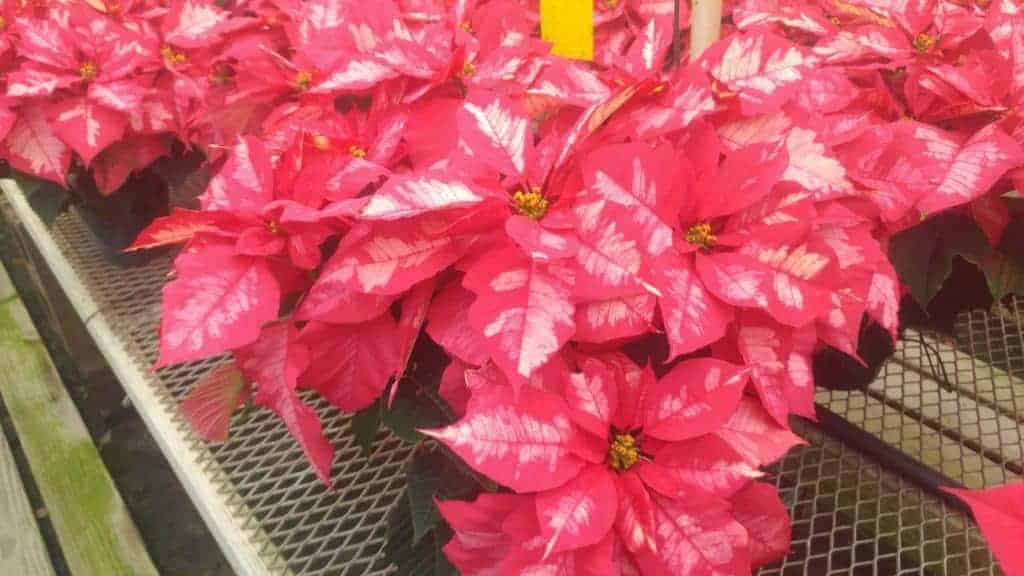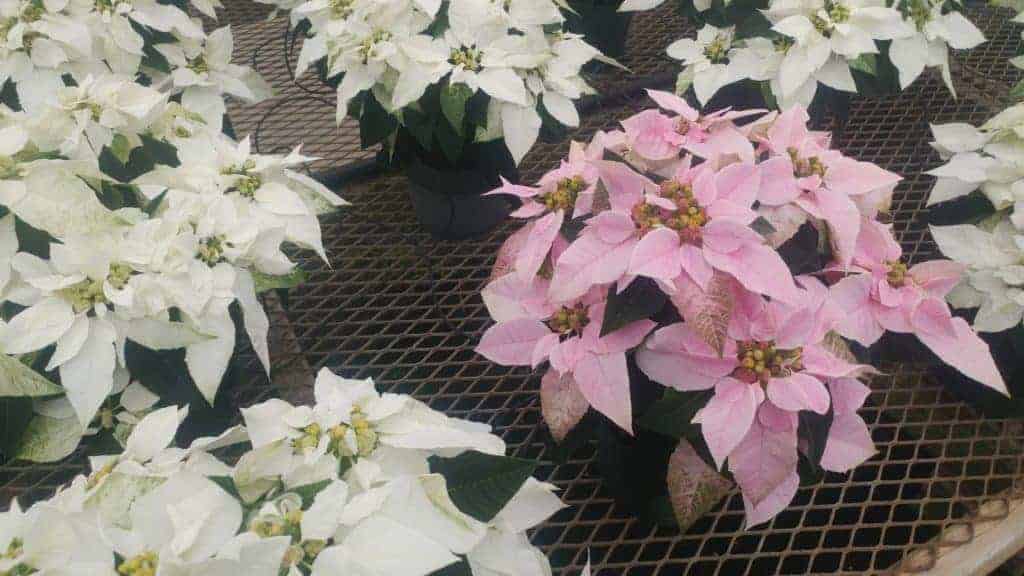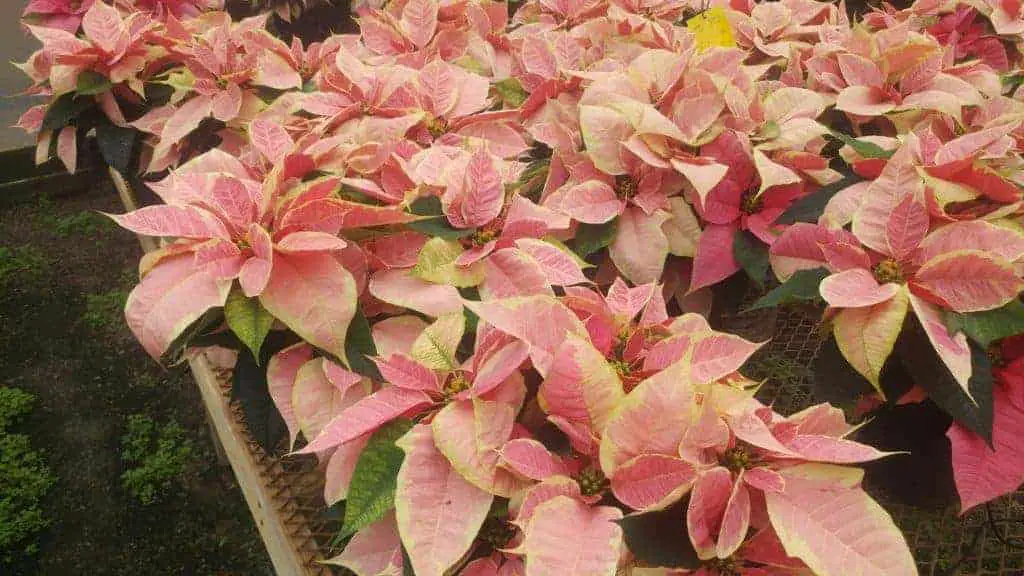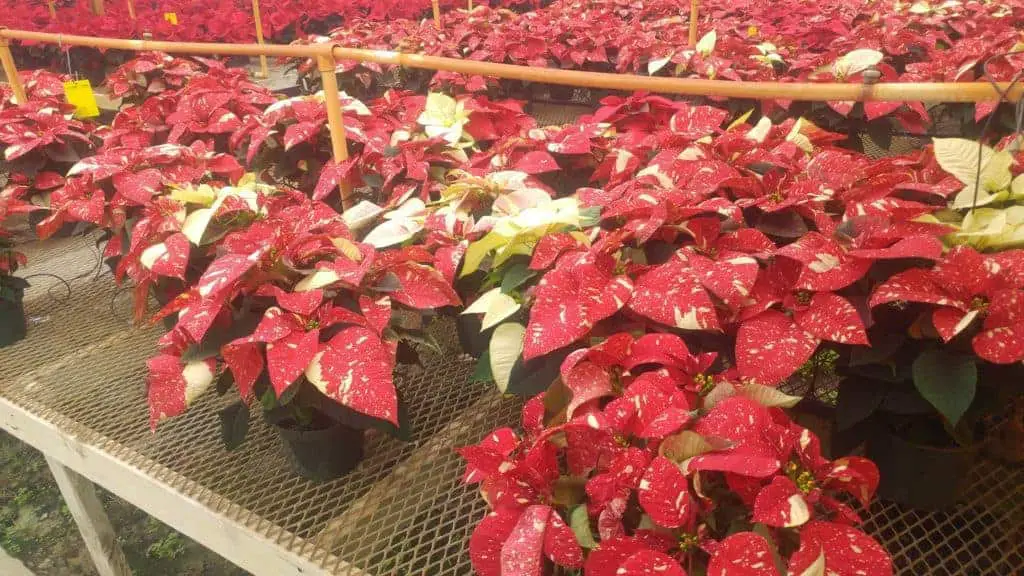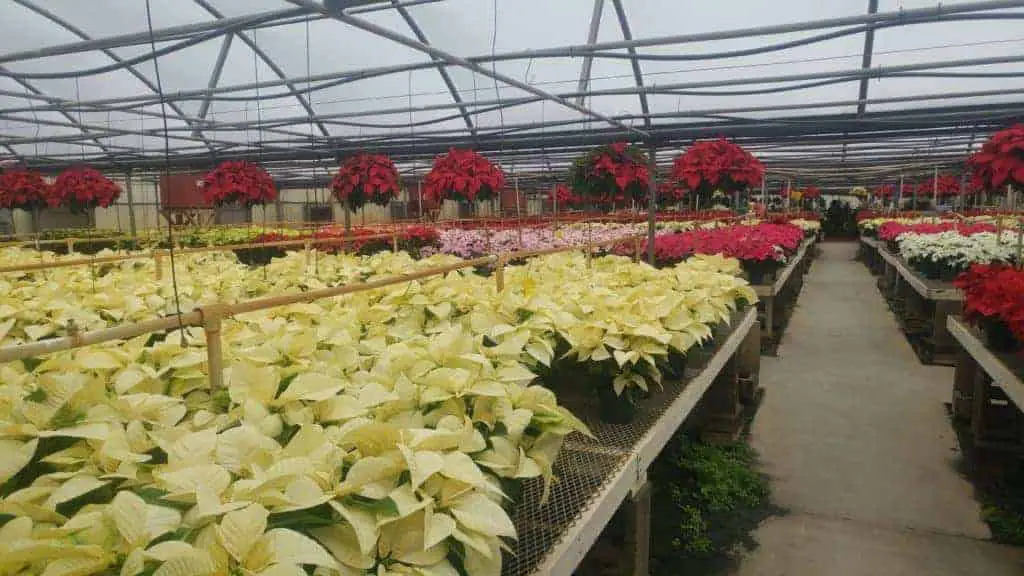Do you hate throwing out your poinsettia each year? Want to save it and rebloom it next holiday season, but was told it was too difficult? Here is how, step by step, throughout the year, you can rebloom your poinsettia.
- January – Grow in the direct sun, keep out of drafts and fertilize.
- February – Prune
- Check for insect pests.
- March – Spring clean and remove damaged leaves and faded bracts.
- June – Prune and fertilize.
- Repot
- 3 weeks after your last frost – Move outdoors, in the shade.
- 2 weeks after moving outdoors, move into the sun at least 6 hours a da and prune
- Fertilize
- 3 weeks before you expect your first frost, bring poinsettia inside
- Reduce fertilizer
- September 21 give 11 hours of bright, direct sun, 13 hours of complete uninterrupted darkness until…..
- November 25, continue to give grow in direct sunlight. Do not let dry out completely.
Those are the basic steps, now let’s go more in-depth to get your best success!
If you want timely reminders of each step, just click on Poinsettia Email to the right ( or bottom) and sign up to get those sent out to you!
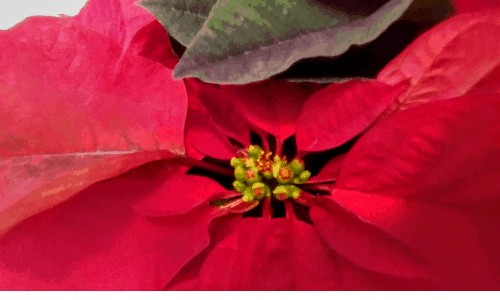
January
Fertilize your poinsettia with an all-purpose fertilizer. Use one that is meant to mix with your water An organic like Dr. Earth Nitro Big High Nitrogen Plant Food (click here to get from Amazon) is a good choice or a conventional such as PENNINGTON ULTRAGREEN PALM TREE & HIBISCUS PLANT FOOD 9-4-9 (click here to get from Amazon), or Humbolt’s Secret (Click here to get from Amazon). The nutrient formulation should be similar to 9-4-9, or 19-6-12. As you can see, it does not have to be those exact numbers, but in the same ratio to each other (such as 5-5-5 is the same ratio as 10-10-10) and follow the package directions for mixing. If in doubt, less is better!
Your Poinsettia will be ready for water when you touch the soil and it feels dry on top. Poinsettias do not like to dry out. Evenly moist and well-drained.
Continue to keep your poinsettia protected from drafts and heat vents. Display away from the chill of a very cold window sill. Give your poinsettia bright, direct light.
February
Check for any insects. Look under the leaves, low down in branch crotches, and on new growth. If you see small fuzzy cotton ball looking bits, that is mealybug, dab at them with rubbing alcohol on a q-tip.
Prune your poinsettia back to about 5 inches. This will encourage branching and growth closer to the base. If your poinsettia is branching already near 5 inches, prune to the next bud above the branching to preserve the most number of base branching. The more branching, the more flowers next season.
Spray the entire plant with either neem oil or insecticidal soap. I would recommend insecticidal soap for plants inside the house and save the neem for when they move outside purely because neem oil can have a scent. Spray the entire plant and stems, including the underside of the leaves.
March
Spring clean your poinsettia, remove any dried or faded leaves or bracts from the plant. Top off the potting soil with sterile potting soil (topsoil or garden soil will NOT do) if any roots are exposed. As the sun moves through its position in the sky as the seasons change, check to make sure it is still getting bright direct light. It may need to move, remembering to keep away from drafts, heating/cooling ducts, and freezing window panes.
June
Prune back your Poinsettia at least 2 or 3 inches, this will promote side branching. Pruning promotes growth. Repot to a larger pot using a sterile potting mix. Topsoil or garden soils will not do. What is needed is a peat moss or coco coir based sterile potting mix. You can use a slow-release fertilizer if you want, however, if the potting soil has gotten damp previously, the slow-release fertilizer pre-mixed into the potting soil may have already released all of its fertilizer, and not there for the plant to use. You can pick up your own slow-release fertilizer to ensure your poinsettia will get what it needs. My favorite slow-release fertilizer for Poinsettias is Osmocote Indoor & Outdoor formula, click here to get from Amazon.
My favorite potting soil is WonderSoil, click here to get it from Amazon , it is coconut coir, worm castings, and kelp. Well draining, yet holds enough moisture. Really fight against root rot and the worm castings and kelp add invaluable nutrients. This ships very well and comes compressed and light and sterile. You won’t have trouble with fungus gnats, mold, or spoiled soil when you open this! So easy to use, light, and clean to transport! The quality of this potting mix is fantastic!
3 weeks AFTER your last frost date, you can move outdoors for the summer. Put in a bright area with only early morning direct sun, but bright the rest of the day.
Check your frost dates here https://morningchores.com/frost-dates/
2 weeks after moving outdoors, move your poinsettias into full sun at least 6 hours of the day.
Continue to water to keep moist but not soggy. If you used the Osmocote fertilizer recommended when repotting, you only need to fertilize with the few treats mentioned here. If not, add some Osmocote Indoor/Outdoor formula, or fertilize weekly with a liquid fertilizer that is low in Phosphorus (the middle number of the 3 on the fertilizer label) Save the water from when you hard-boil eggs, cool to room temperature, and water with that. The extra calcium will be welcomed by your poinsettia (your tomatoes too…). Also watering with a tea from coffee grounds, compost, and fish & kelp extract) will keep your poinsettia happy.
Tip prune back 2-3 inches again to encourage branching.
3 weeks before you expect a frost, move your poinsettia back inside the house and give at least 6 hours of direct sunlight. If you are adding fertilizer with your water, reduce it down to ¼ strength.
ON September 21st, start the daily uninterrupted darkness treatment. Put the plant in a closet or in a box, something to exclude ALL light for 13 hours a day. UNINTERRUPTED, or you have to start the treatment all over again, which will throw your timing off. No, accidentally opening the closet to check on it or find a coat. Uninterrupted. The temperature is best at around 60 F- 65 F. During the day continue to water, lightly fertilize, and give 11 hours of bright light daily, turning the plant to keep the growth even.

November 25. Stop the darkness treatment, put your poinsettia in a spot out of drafts that gets at least 6 hours of direct sun. Reduce water and reduce fertilizer. Continue to not let dry out.
December. Enjoy your Poinsettia, start the cycle again 🙂
Related Questions:
How to make a poinsettia last.
To have a long-lasting poinsettia first choose one that has not bloomed for a long time already. A poinsettias flowers are not the colorful bracts you see, but tiny yellow flowers in the center.

First, look for flowers in the tight bud stage, as shown here.
Open flowers look like this and are still ok.

Bloomed out looks like this, just the stubs left with no buds or flowers. This one will not have bright and long-lasting bracts.

Next, protect from cold temperatures while bringing home, even for a minute.
Next, keep your poinsettia in a cool to just warm room, about 60 to 65 degrees F, not hot. The warmer it is, the faster those blooms, and the colorful bracts, will fade.
Keep your poinsettia out of drafts and away from heat vents. Otherwise, it will start dropping its leaves in a few days.
Keep evenly moist, not soggy. This is a plant I check every day, and if in doubt if it needs water, give your poinsettia some water. Do not let dry out and do not keep in the pretty colorful pot cover either (unless you promise to empty the water that drains out the bottom and collects in the plastic every time you water, you don’t need to promise me, promise your poinsettia).
What colors do poinsettias come in?
Red, pink, ivory and white. Many shades of each color and marbling and speckling in those choices.
There are many colors of poinsettias beyond red. There are varieties of bright to soft pink, ivory to pure white, and bi-color red and white, pink and white, marbles and speckles. Here are a few photos of some:


